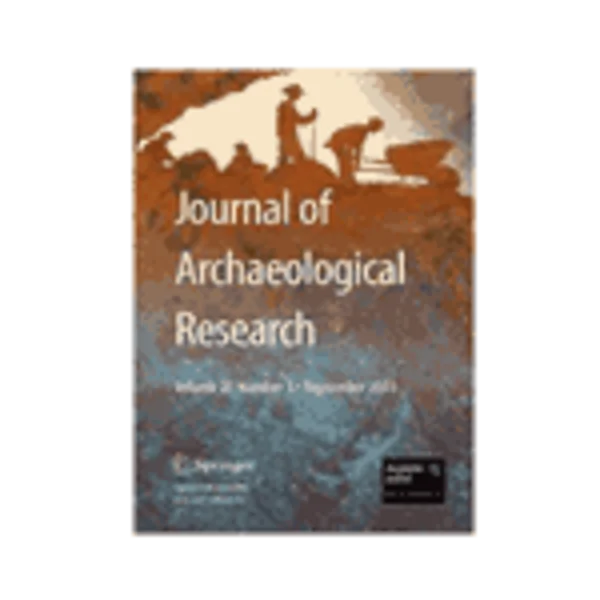-
cave art in context: methods for the analysis of the spatial organization of cave sites
جزئیات بیشتر مقاله- تاریخ ارائه: 1392/07/24
- تاریخ انتشار در تی پی بین: 1392/07/24
- تعداد بازدید: 868
- تعداد پرسش و پاسخ ها: 0
- شماره تماس دبیرخانه رویداد: -
investigations of prehistoric cave art have long neglected the surrounding context: space, archaeological objects, and imprints. as a result, an integrative structural approach that analyzes cave art as part of an anthropomorphized landscape has not been available. this article draws on urban planning and the physiology of the human eye to provide an innovative archaeospatial analysis of cave sites. a set of relevant features from the caves of bédeilhac, fontanet, and le portel was selected and defined (light zone, chamber type, path network, mode of movement, and available space). an analysis of the prehistoric remains in the caves allows the reconstruction of different concentrations of human activities (cave art, archaeological objects, and imprints). the projection of these concentrations onto the structured map of the caves results in four types of locations: drawing location, supply location, drawing location with substantial activities, and drawing location with consumption activities. this approach opens new avenues for the archaeological perception of caves and their inhabitants: upper paleolithic humans were very familiar with caves and probably followed a master plan during their stay in the dark.
مقالات جدیدترین رویدادها
-
استفاده از تحلیل اهمیت-عملکرد در ارائه الگوی مدیریت خلاقیت سازمانی و ارائه راهکار جهت بهبود
-
بررسی تاثیر ارزش وجوه نقد مازاد بر ساختار سرمایه شرکت های پذیرفته شده در بورس اوراق بهادار تهران
-
بررسی تأثیر سطح افشای ریسک بر قرارداد بدهی شرکت های پذیرفته شده در بورس اوراق بهادار تهران
-
بررسی تأثیر رتبه بندی اعتباری مبتنی بر مدل امتیاز بازار نوظهور بر نقد شوندگی سهام با تأکید بر خصوصی سازی شرکت ها
-
تأثیر آمیخته بازاریابی پوشاک ایرانی بر تصویر ذهنی مشتری پوشاک ایرانی (هاکوپیان)
-
مدیریت ریسک در سیستم های تامین آب شهری
-
بررسی کشاورزی هوشمند اقلیمی به عنوان یک سیاست کشاورزی در جهت کاهش تغییرات اقلیم
-
بررسی اثرات ضدقارچى پیاز و برخى از داروهاى آزولى به صورت منفرد و در ترکیب با یکدیگر بر روی مخمرهای بیماری زا
-
استفاده از مدل ریزمقیاس کننده lars-wg در شبیه سازی و پیش بینی متغیر اقلیمی ساعات آفتابی در مناطق زعفران خیز استان خراسان رضوی
-
a sorption balance study of water vapour sorption on anhydrous cement minerals and cement constituents
مقالات جدیدترین ژورنال ها
-
مدیریت و بررسی افسردگی دانش آموزان دختر مقطع متوسطه دوم در دروان کرونا در شهرستان دزفول
-
مدیریت و بررسی خرد سیاسی در اندیشه ی فردوسی در ادب ایران
-
واکاوی و مدیریت توصیفی قلمدان(جاکلیدی)ضریح در موزه آستان قدس رضوی
-
بررسی تاثیر خلاقیت، دانش و انگیزه کارکنان بر پیشنهادات نوآورانه کارکنان ( مورد مطالعه: هتل های 3 و 4 ستاره استان کرمان)
-
بررسی تاثیر کیفیت سیستم های اطلاعاتی بر تصمیم گیری موفق در شرکتهای تولیدی استان اصفهان (مورد مطالعه: مدیران شرکتهای تولیدی استان اصفهان)
-
بررسی تأثیر نوسانات جریان نقدی و استفاده از بدهی در سررسیدهای متفاوت در شرکت های پذیرفته شده در بورس اوراق بهادار تهران
-
بررسی زمینه های بروز جرم مداخله در معاملات دولتی
-
ارائه الگوی انتخاب تامین کننده سبز با رویکرد تلفیق تکنیک های تصمیم گیری چندشاخصه
-
نقش حاکمیت شرکتی در شبکه بانکی کشور
-
study of the relationship between monetary policy, accounting conservatism and corporate trade credit




سوال خود را در مورد این مقاله مطرح نمایید :